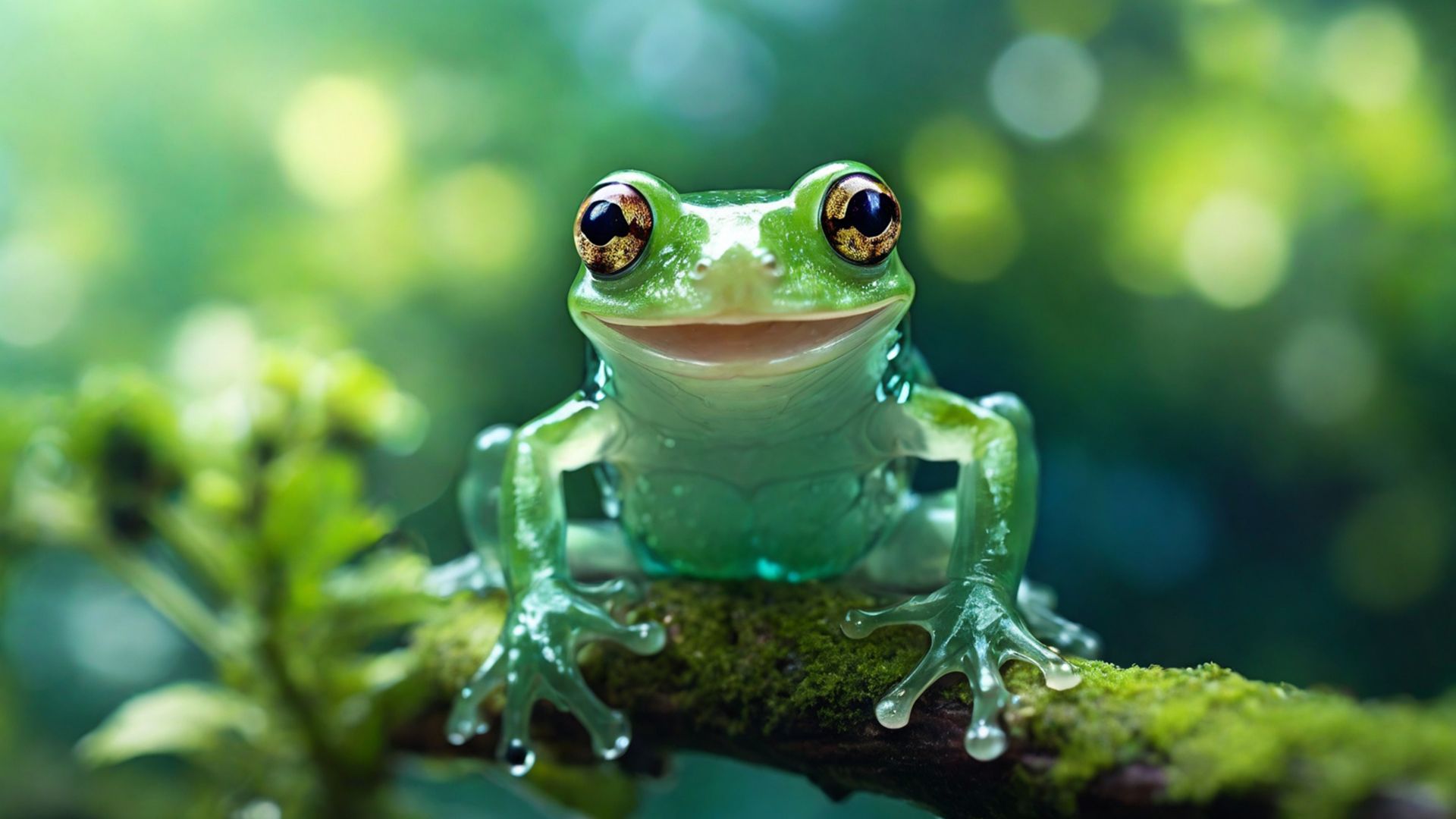Prepare to be amazed as we journey through the incredible world of animals, each one showcasing features that defy imagination and highlight the brilliance of nature’s creativity.
From the mysterious depths of the oceans to the vast savannahs and dense forests, these creatures boast unique adaptations and astonishing traits that make them true marvels of the natural world.
Whether it’s their appearance, behavior, or extraordinary abilities, each animal on this list offers a glimpse into the wonders of evolution. Let’s see what makes them truly one-of-a-kind.
1. Saiga Antelope
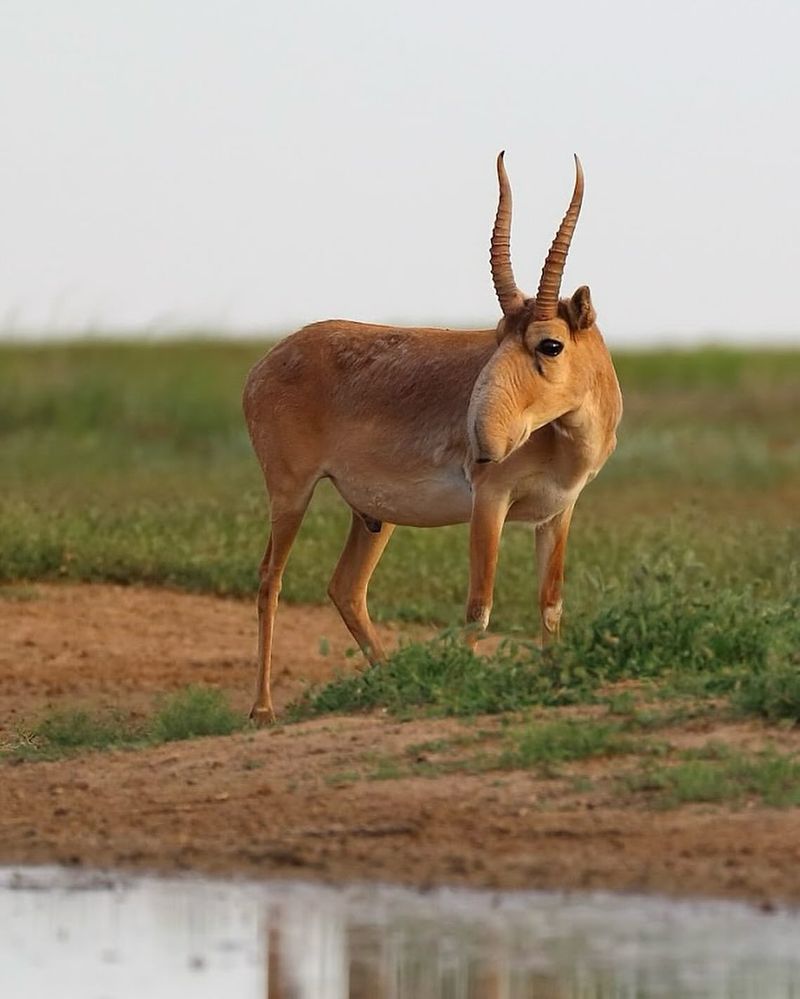
The Saiga Antelope is known for its distinctive oversized nose, which looks almost cartoonish. This unique feature helps it filter out dust from the dry grasslands where it lives.
The nose also warms cold air in the winter, providing the animal with a crucial adaptation. Saiga Antelopes are found in Central Asia, particularly in Kazakhstan and Mongolia.
Their population has been threatened due to poaching and habitat loss, making conservation efforts vital. Despite challenges, the Saiga remains a symbol of resilience in its harsh environment, captivating scientists and wildlife enthusiasts alike.
2. Narwhal
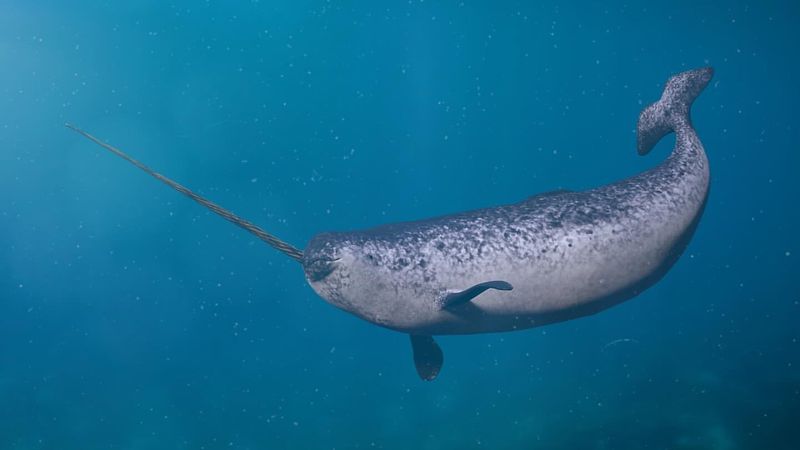
The Narwhal, often dubbed the unicorn of the sea, possesses a long, spiral tusk that can grow up to ten feet. This tusk is actually an elongated tooth, filled with nerve endings, offering sensory perception.
Found in the Arctic waters, Narwhals use their tusks in mating displays and possibly to detect changes in their environment.
Despite their mystical appearance, Narwhals face threats from climate change and illegal hunting. These mysterious creatures continue to fascinate researchers, who study their unique adaptations to the icy Arctic environment.
3. Red-Lipped Batfish
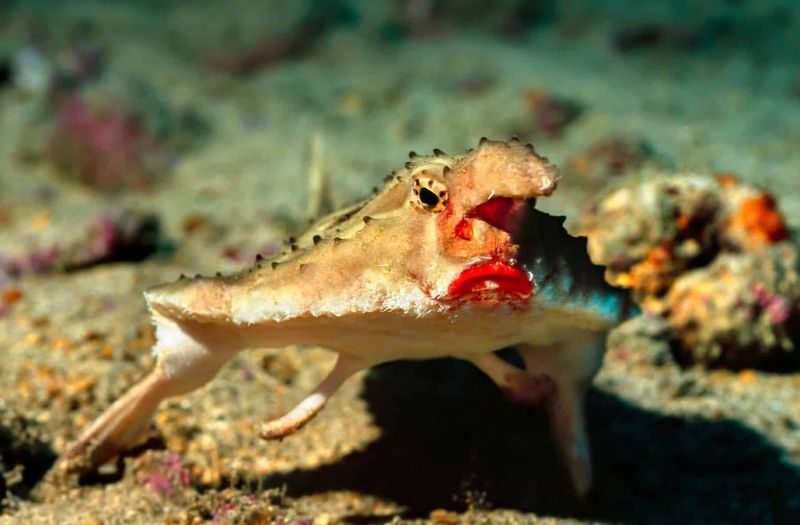
The Red-Lipped Batfish is a peculiar fish found near the Galapagos Islands, easily recognizable by its bright red lips. These lips are thought to attract mates, giving the fish a distinctive appearance.
Unlike typical fish, it uses its pectoral fins to “walk” along the ocean floor. Its body shape and behavior are adapted to its benthic lifestyle.
Although not a fast swimmer, the Red-Lipped Batfish’s unique features make it a captivating subject of marine biology studies, showcasing evolution’s creativity.
4. Axolotl
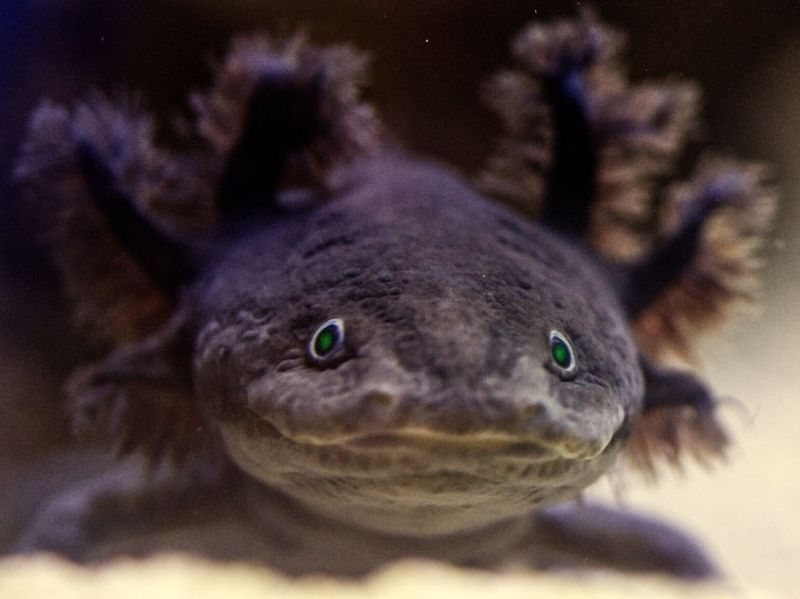
The Axolotl, often dubbed the ‘Mexican walking fish’, is an amphibian with remarkable regenerative abilities. It can regrow limbs, spinal cords, and even parts of its heart and brain.
Native to Mexico, this creature retains its larval features throughout adulthood, a condition known as neoteny. Its external gills and wide, smiling mouth make it a popular subject in research laboratories.
Despite its biological wonders, the Axolotl is critically endangered due to habitat destruction, prompting conservation efforts to preserve this unique species.
5. Gharial
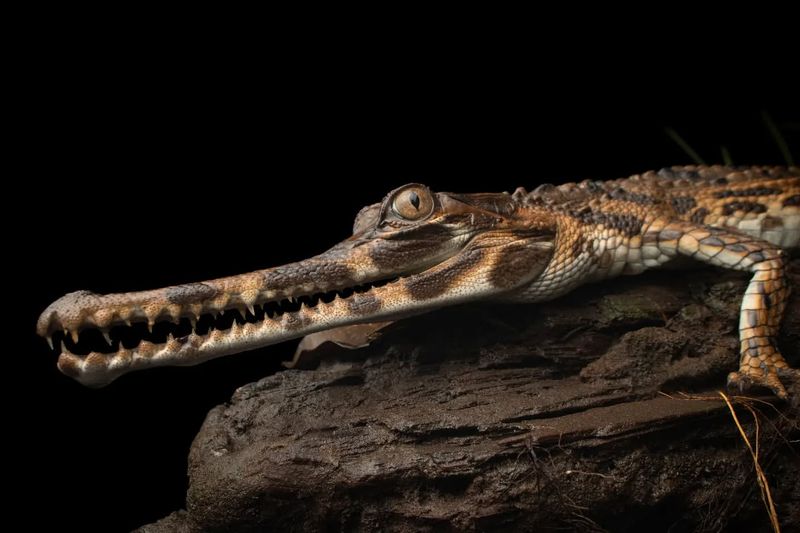
The Gharial, native to the rivers of India and Nepal, is a crocodilian with an extremely long and thin snout. This adaptation is perfect for catching fish, its primary diet.
The snout’s shape minimizes water resistance, allowing quick, agile movements. Males have a bulbous growth on the tip of their snout, used to produce vocal sounds.
While once widespread, the Gharial’s population has dwindled due to habitat destruction and fishing nets. Conservation programs aim to protect this fascinating reptile and its unique evolutionary traits.
6. Pangolin
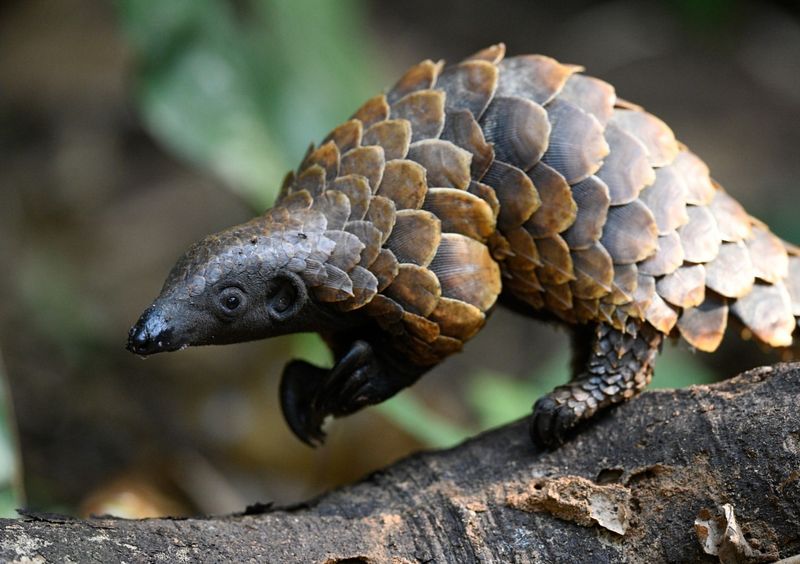
The Pangolin, often referred to as a ‘scaly anteater’, is the only mammal completely covered in scales. These scales provide protection from predators when it curls into a ball.
Found in Africa and Asia, Pangolins are nocturnal creatures that consume ants and termites with their long, sticky tongues. Unfortunately, they are the world’s most trafficked mammals due to demand for their scales and meat.
Conservationists are working tirelessly to raise awareness and implement protections for Pangolins, highlighting their unique ecological role and vulnerability.
7. Platypus
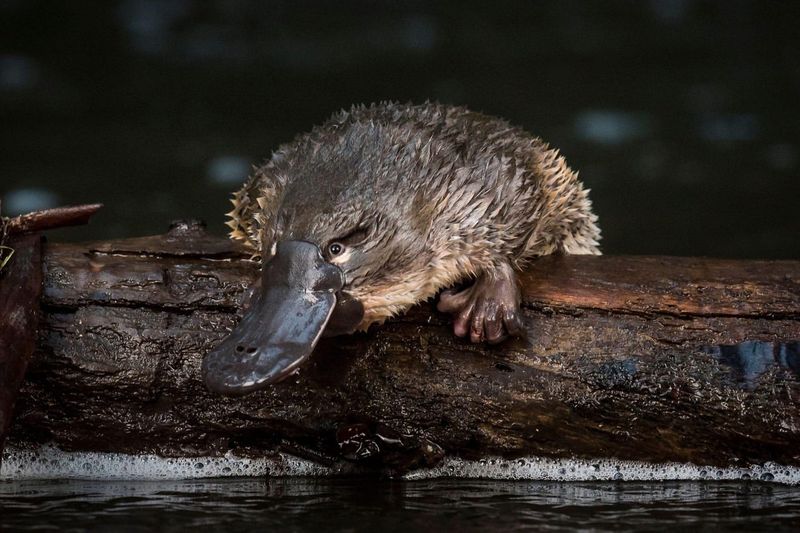
The Platypus is a perplexing creature with a duck-bill, webbed feet, and a beaver-like tail. Native to Australia, this egg-laying mammal is one of the few venomous mammals, with males possessing venomous spurs on their hind legs.
Its bill is equipped with electroreceptors, used to detect prey underwater. The Platypus swims with its eyes closed, relying on this keen sense.
This unique blend of features has made the Platypus a subject of fascination and study, illustrating the diversity of evolutionary paths.
8. Mantis Shrimp
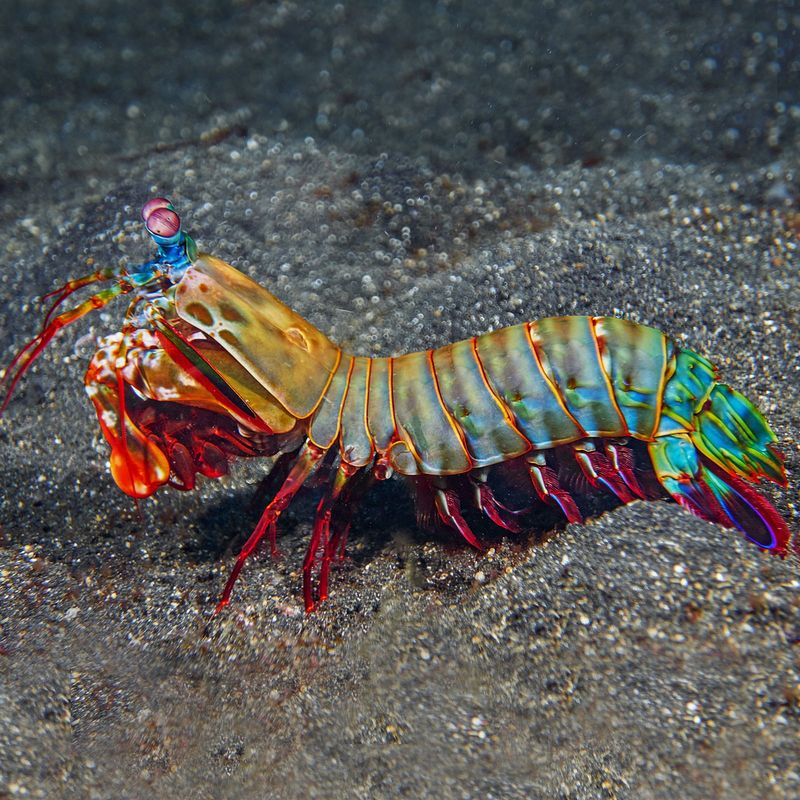
The Mantis Shrimp is a small marine crustacean known for its powerful punching claws, capable of breaking glass.
These punches are the fastest strikes in the animal kingdom, reaching speeds of 50 mph. Found in tropical and subtropical waters, Mantis Shrimps have incredibly complex eyes, capable of seeing polarized light and detecting a broader spectrum of colors than humans.
Their vibrant colors and unique abilities make them a fascinating species for both researchers and aquarium enthusiasts, embodying the wonders of marine life.
9. Shoebill
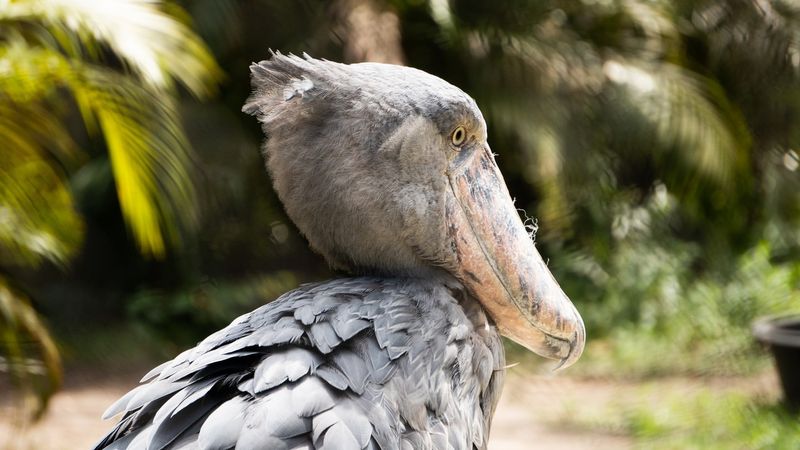
The Shoebill is a large, prehistoric-looking bird found in the swamps of East Africa. It is easily recognizable by its massive shoe-shaped bill, which it uses to catch fish and frogs.
Shoebills exhibit a slow, careful hunting technique, standing still for long periods. Their unique appearance and behaviors have made them a favorite among birdwatchers.
However, habitat destruction poses a threat to their populations, prompting conservation efforts to ensure these remarkable birds continue to thrive in their natural environments.
10. Leafy Sea Dragon
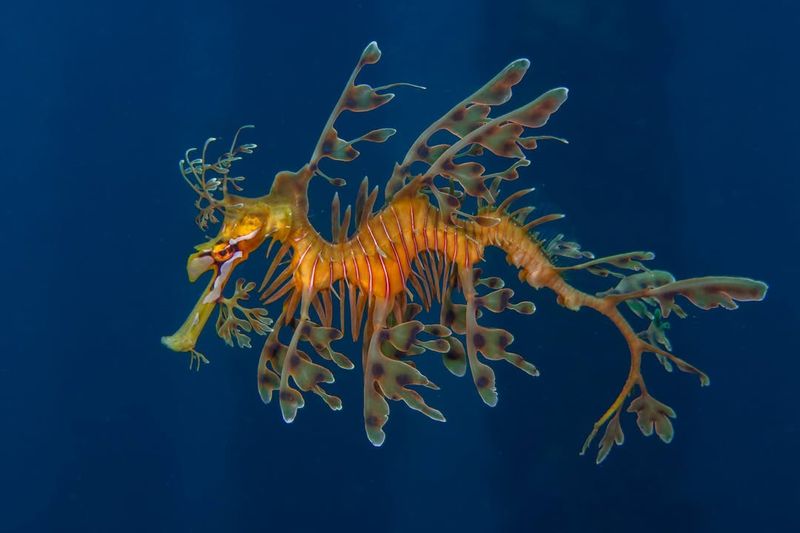
The Leafy Sea Dragon, found off the southern and western coasts of Australia, is a master of disguise. Its leaf-like appendages offer perfect camouflage among seaweed and kelp.
Unlike most fish, it relies on its camouflage instead of speed to avoid predators. The Leafy Sea Dragon moves gracefully through the water, captivating divers and marine biologists.
Despite its enchanting appearance, it faces threats from pollution and habitat degradation, driving efforts to protect this unique marine creature and its habitat.
11. Aye-Aye
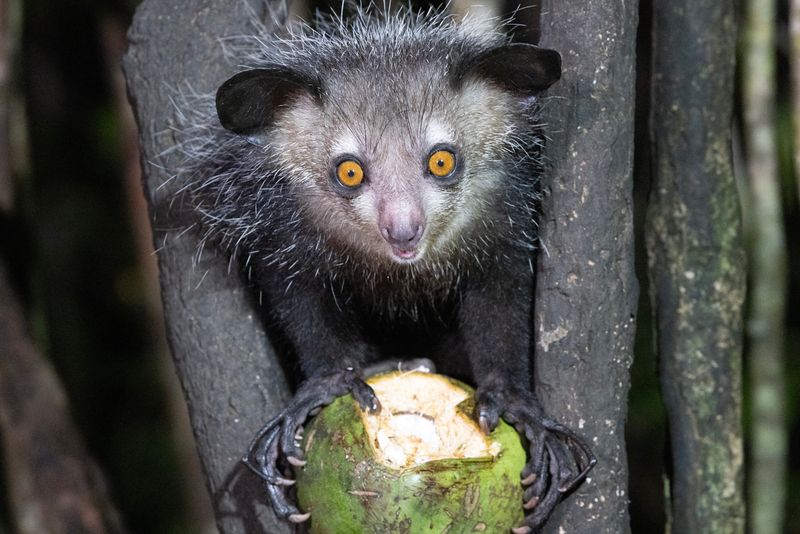
The Aye-Aye is a nocturnal lemur native to Madagascar, known for its distinctive long middle finger. This finger is used to tap on trees and extract insects, a behavior known as percussive foraging.
With its large eyes and bat-like ears, the Aye-Aye navigates through the night, making it a unique primate. Despite its bizarre appearance, local myths have led to its persecution.
Conservation efforts are crucial to protect the Aye-Aye, highlighting the need to preserve Madagascar’s unique biodiversity and dispel harmful superstitions.
12. Venezuelan Poodle Moth
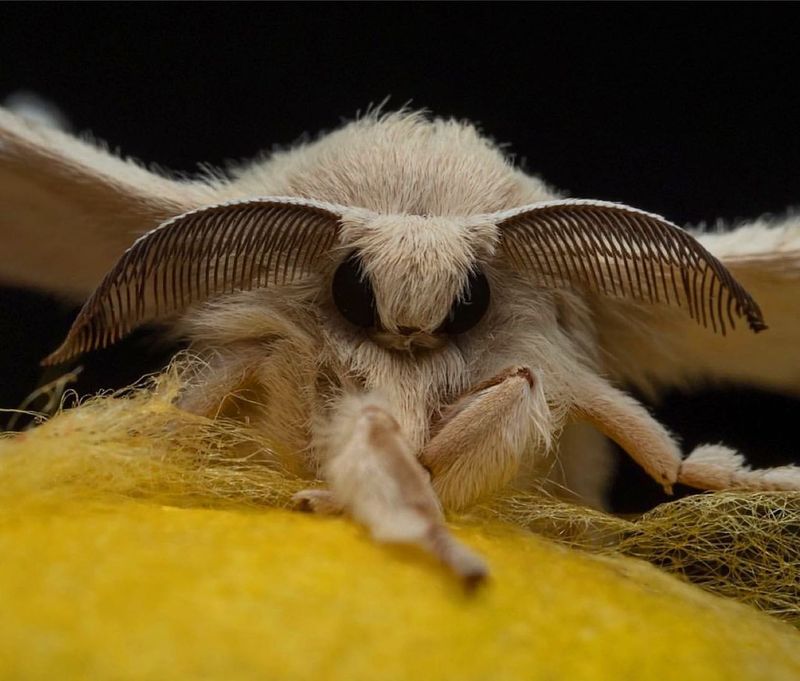
The Venezuelan Poodle Moth is a mysterious and striking insect discovered in Venezuela. Its fluffy white body and feathery antennae make it resemble a small poodle.
This newly discovered species has sparked interest and debate among entomologists, eager to learn more about its ecology and behavior. Its unique appearance has also made it a viral sensation.
While little is known about its habits, the Poodle Moth highlights the incredible diversity yet to be fully explored in the insect world.
13. Okapi
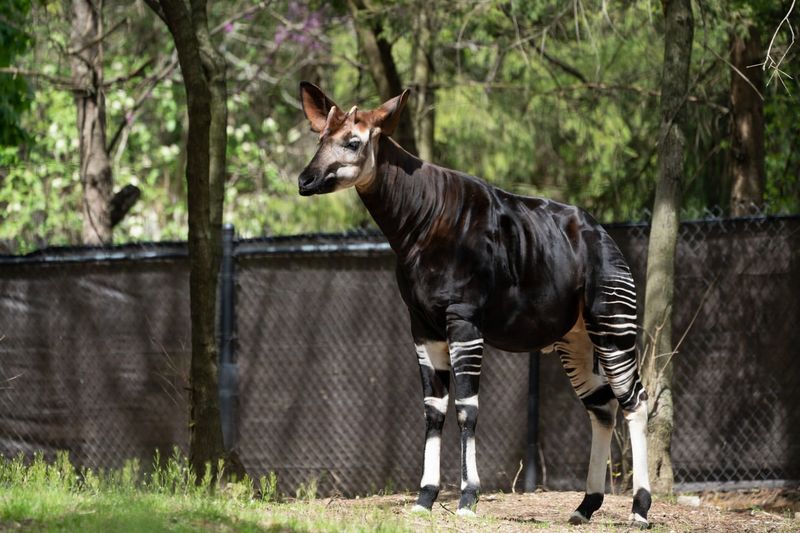
The Okapi, often called the ‘forest giraffe’, is a unique mammal residing in the dense rainforests of the Democratic Republic of Congo.
It has a body similar to a giraffe’s but with zebra-like stripes on its legs. These stripes serve as camouflage in the dappled sunlight of the forest. The Okapi’s long tongue is used to grasp leaves and branches.
Despite its reclusive nature, the Okapi faces threats from habitat loss and poaching, emphasizing the need for effective conservation strategies to protect this enigmatic creature.
14. Sun Bear
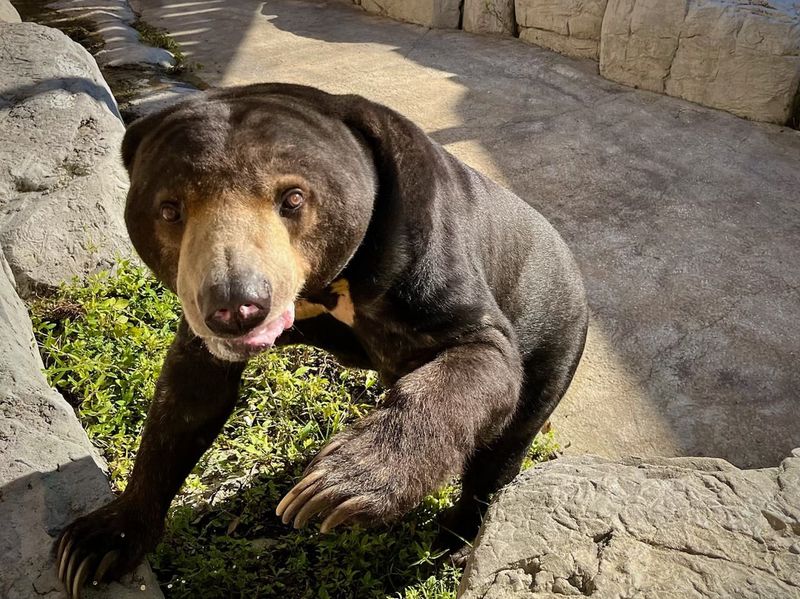
The Sun Bear, native to the tropical forests of Southeast Asia, is the smallest bear species. It is easily identifiable by its short, sleek black fur and distinctive orange chest patch.
Renowned for its climbing ability, the Sun Bear uses its long claws to scale trees in search of honey and insects. Despite its small stature, it is a powerful and agile predator.
Threats from deforestation and illegal wildlife trade have led to a decline in Sun Bear populations, spurring conservation actions to protect them.
15. Fossa
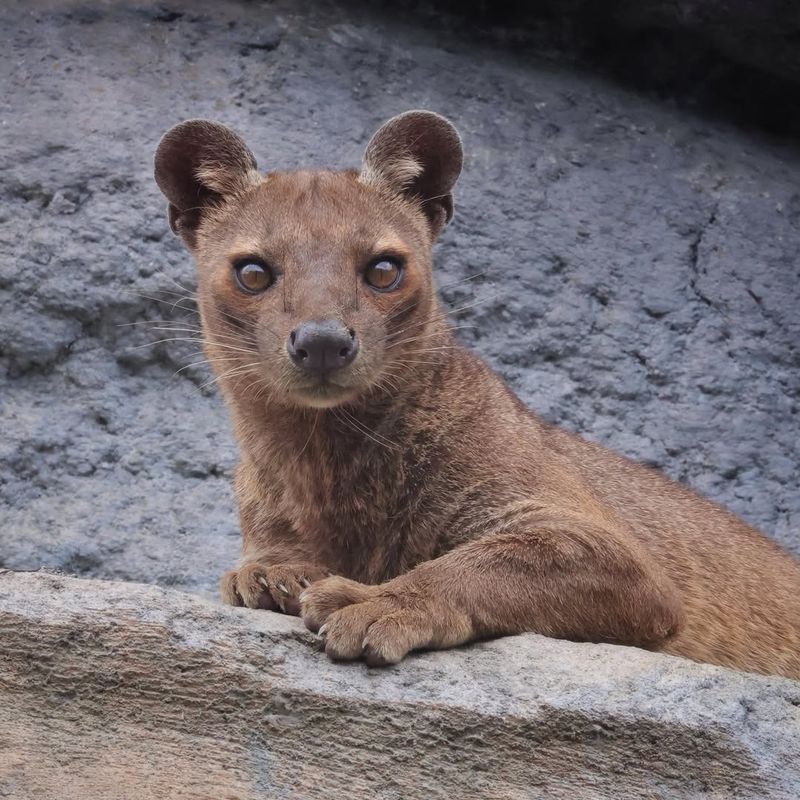
The Fossa is a carnivorous mammal endemic to Madagascar, known for its cat-like appearance and agile hunting skills.
It is the island’s top predator, preying on lemurs and other small animals. With retractable claws and a flexible ankle joint, the Fossa is an adept climber, capable of pursuing prey through trees.
Its long tail aids in balance during these pursuits. Despite its importance in the ecosystem, habitat destruction threatens the Fossa’s survival, highlighting the need for conservation efforts to protect Madagascar’s unique wildlife.
16. Glass Frog
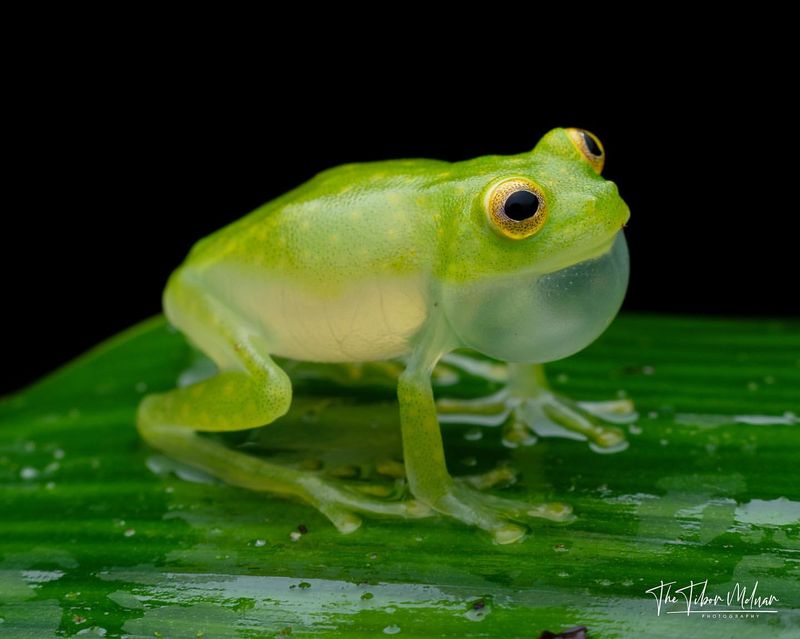
The Glass Frog, native to Central and South America, is famous for its translucent skin, through which its internal organs can be seen.
This unique feature provides camouflage against predators. Glass Frogs are mostly found in trees near rivers and streams, where they lay their eggs. The male guards the eggs until they hatch, displaying remarkable parental care.
Their delicate appearance masks a robust survival strategy, underscoring the complexity of rainforest ecosystems and the importance of preserving these habitats.
17. Proboscis Monkey
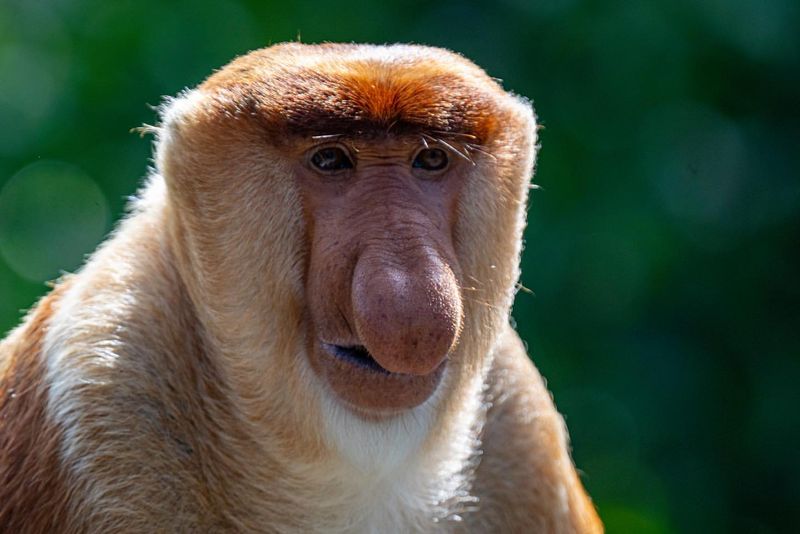
The Proboscis Monkey, native to Borneo, is instantly recognizable by its large, pendulous nose. This feature is believed to amplify vocalizations and attract mates.
Living in mangrove forests and swamps, these monkeys are excellent swimmers, often leaping into water to escape predators. Their diet consists mainly of leaves, seeds, and fruits.
Deforestation and habitat degradation pose significant threats to their populations, emphasizing the need for conservation efforts to ensure their continued survival in the wild.
18. Kakapo
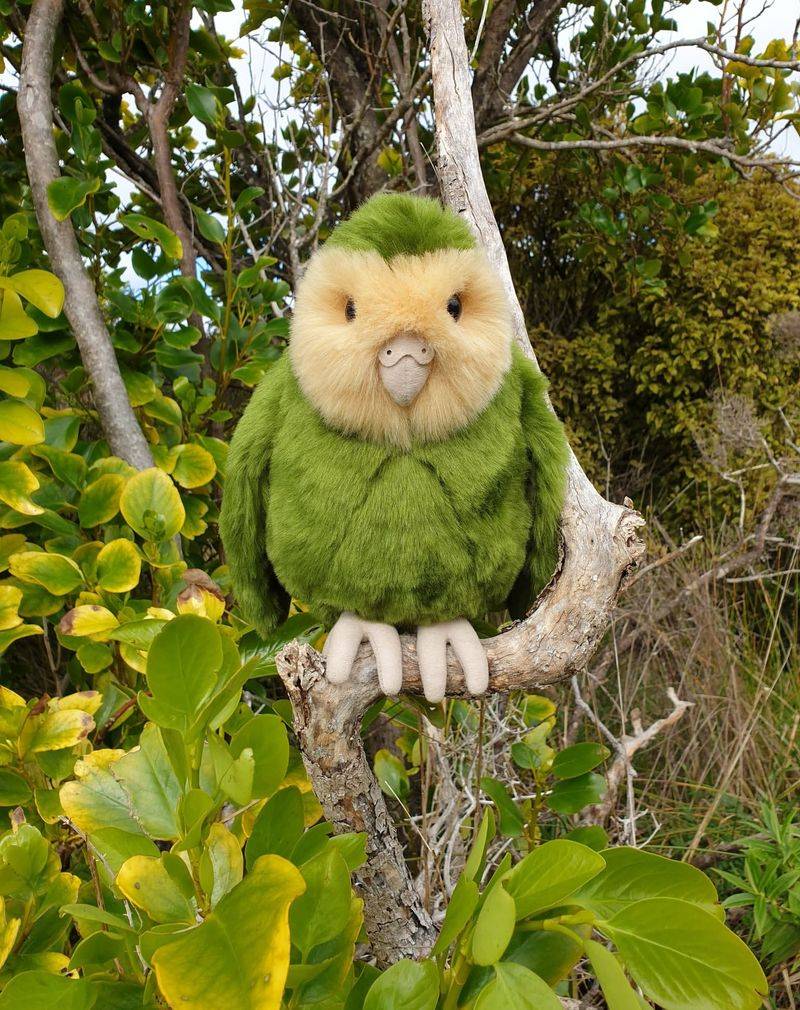
The Kakapo is a nocturnal parrot native to New Zealand, known for its mossy green feathers and hefty build. It is flightless and the world’s only parrot with such a feature.
Kakapos have a unique mating call, a booming sound that can be heard over long distances. Despite their charming traits, they are critically endangered, with only a small population remaining.
Conservationists are dedicated to saving the Kakapo, employing innovative strategies to boost their numbers and secure their future.
19. Anglerfish
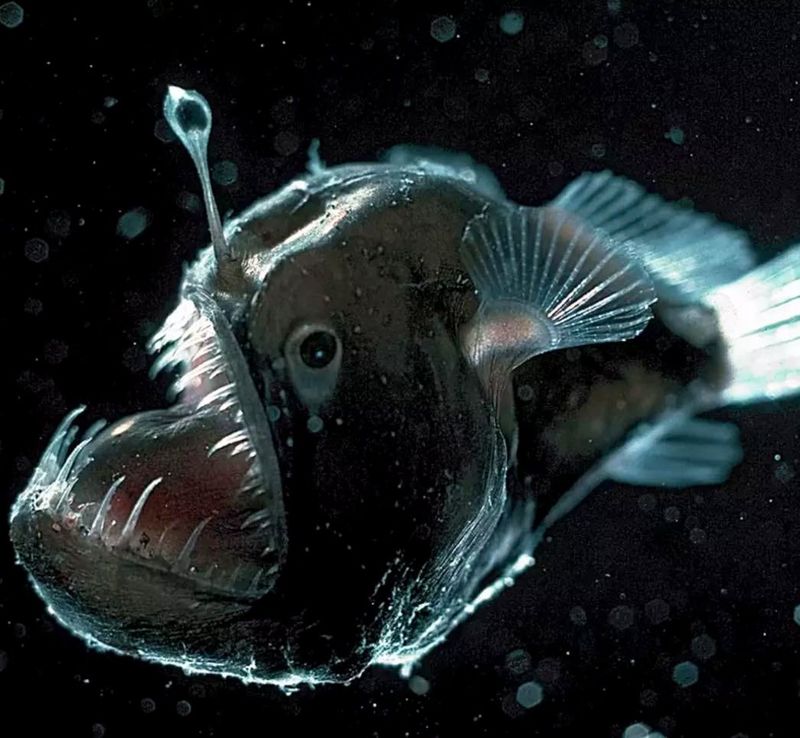
The Anglerfish is a deep-sea marvel, known for its bioluminescent lure that protrudes from its head. This lure attracts prey in the pitch-black depths of the ocean.
With its large mouth and sharp teeth, the Anglerfish can consume prey up to twice its size, illustrating its predatory prowess. Sexual dimorphism is extreme, with tiny males fusing to the females.
The Anglerfish’s adaptations to deep-sea life offer scientists insights into life in extreme environments, highlighting the marvels of evolutionary adaptation.

